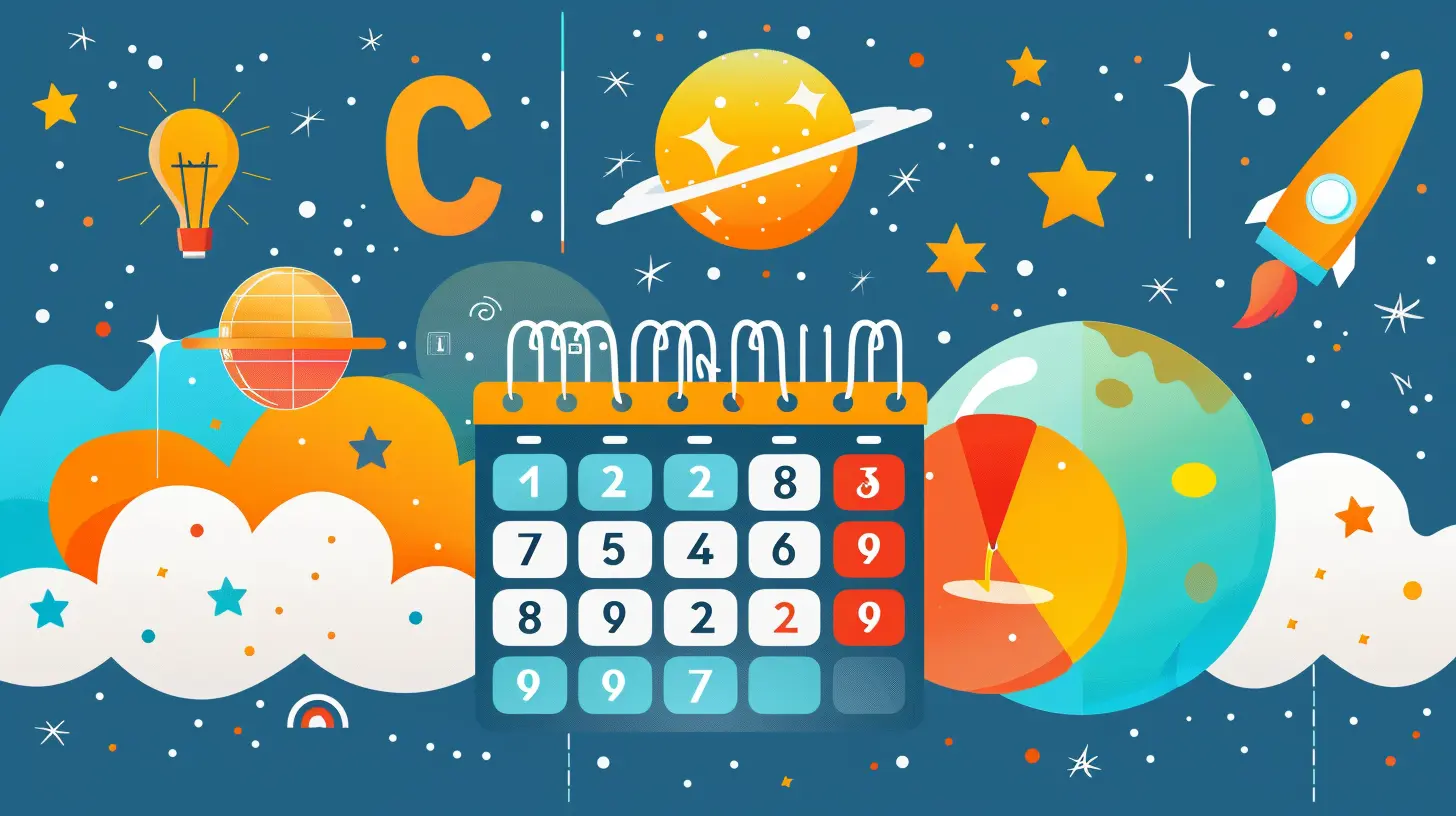How to Create a Content Calendar that Delivers Consistent Value
26 June 2025
Let’s start with a quick question: have you ever found yourself scrambling last minute to create content for your business or brand? Frustrating, isn’t it? You know you should have a plan, but life keeps happening, and next thing you know, you’re stuck staring at a blank screen wondering where to even begin.
Well, that’s where a content calendar comes to the rescue—it’s the secret sauce to keeping your content game strong, organized, and consistently valuable. Think of it as your GPS. It helps you navigate the otherwise chaotic journey of content creation without detours or roadblocks.
In this guide, I’ll walk you through how to create a content calendar that not only organizes your ideas but also ensures you’re delivering value to your audience with every post. Let’s dive in! 
What is a Content Calendar, and Why Do You Need One?
Real quick—what exactly is a content calendar?In simple terms, a content calendar is like your content roadmap. It’s a document or system (digital or physical) that outlines what content you’ll create, when you’ll publish it, and on which platforms. And no, it’s not just for big teams or fancy marketers. Even if you’re a solopreneur, a content calendar can save your sanity.
Why bother making one?
- Clarity: No more guessing what to post next.
- Consistency: You stay on schedule, which builds trust with your audience.
- Strategy: It helps you align your content with your goals (instead of winging it).
- Efficiency: Batch brainstorming and planning save time down the road.
In short, it helps you work smarter, not harder. 
Step-by-Step Guide to Creating a Content Calendar
Creating a content calendar might sound like a daunting task, but trust me—it’s easier than you think once you break it down into manageable steps. Here’s how to get started:1. Define Your Goals (What’s the Point?)
Before you start filling in dates and topics, you need to figure out your “why.” Ask yourself:- Why am I creating content?
- What do I want to achieve with it?
- Who am I creating it for?
For example, are you trying to drive traffic to your website? Build brand awareness? Generate leads? Knowing your goals will give your calendar direction.
Think of it this way: If creating content without a plan is like throwing spaghetti at the wall to see what sticks, having clear goals is like cooking with a recipe—it’s intentional and way less messy.
2. Get to Know Your Audience (No Guessing Allowed!)
If you don’t know what your audience cares about, how will you serve them? Take some time to research and understand:- What problems do they face?
- What questions do they have?
- What type of content do they enjoy?
You can gather insights from customer feedback, surveys, or even scrolling through the comment sections of your competitors. This step ensures your content calendar is loaded with topics that genuinely resonate with your audience.
3. Choose Your Platforms (Where Are You Showing Up?)
Now, let’s talk about where you’ll be publishing your content. Will it be blog posts? Instagram reels? LinkedIn articles? Podcasts? Choose platforms based on:- Where your audience hangs out the most.
- The type of content you enjoy creating (because consistency is easier when you’re having fun).
Pro-tip: Don’t spread yourself too thin. It’s better to dominate on a couple of platforms than do a mediocre job on all of them.
4. Brainstorm Content Ideas (Here’s Where the Fun Begins)
Now comes the creative part—brainstorming ideas. Start by thinking about these questions:- What topics align with my goals?
- What’s currently trending in my industry?
- What are some seasonal or timely events I can incorporate?
Tools like Google Trends, BuzzSumo, and even good ol’ social media can help spark ideas. And don’t forget to repurpose existing content! Turn a popular blog post into a video, or break down a long article into bite-size social posts.
5. Organize Your Calendar (Time to Get Visual)
Okay, now we’re getting into the nitty-gritty. You’ve got your goals, audience, platforms, and content ideas—now it’s time to organize them into an actual calendar.Here’s what you’ll need to decide:
- Frequency: How often will you post? (Daily? Weekly? Bi-weekly?)
- Publishing Dates: Choose specific dates for each piece of content.
- Content Themes: Assign themes or focus areas to each month or week.
You can use tools like Google Calendar, Trello, or dedicated content calendar software like CoSchedule or Asana. Want to keep it simple? Use a spreadsheet! Just create columns for date, content type, topic, platform, and status.
6. Create a Workflow (No More Headaches)
Here’s the deal: your content calendar is only as good as your workflow. Without a process, you risk falling behind. So, establish a system that works for you.Here’s an example of a basic workflow:
1. Brainstorm: Generate content ideas.
2. Plan: Assign ideas to specific dates on your calendar.
3. Create: Write, film, or record the content.
4. Review: Edit and optimize for SEO or platform standards.
5. Publish: Schedule and hit post!
6. Analyze: Measure performance so you can improve next time.
Batching tasks can also make a huge difference. For instance, spend one day writing multiple blog posts instead of tackling them one by one.
7. Track and Tweak (Because Nothing’s Perfect)
Let’s be real: not everything you plan will work out perfectly. And that’s okay! The beauty of a content calendar is that it’s a living document—you can adjust it as you go.Keep an eye on your analytics (every platform offers insights these days):
- Which content performs the best?
- Are you staying consistent with your posting schedule?
- Are you hitting your goals?
Based on these insights, tweak your calendar. Maybe your audience prefers videos over written posts, or maybe your Instagram content does better on Tuesdays than Fridays. Whatever the case, adapt accordingly. 
Tips for Making Your Content Calendar Truly Valuable
Here are a few extra tips to ensure your content calendar delivers value every single time:- Batch Create Evergreen Content: Evergreen topics (things that don’t lose relevance over time) can save you when life gets hectic. Think FAQs, how-to guides, or beginner tips.
- Leave Room for Flexibility: Trending topics or unexpected events may arise—leave some blank spaces in your calendar for those.
- Add Variety: Alternate between educational, entertaining, and promotional content to keep your audience engaged.
- Repurpose like a Pro: Turn that long blog post into snippets for social media or an infographic. Stretch your content further!
- Stay Consistent, but Realistic: Don’t overcommit yourself. It’s better to post less frequently but consistently than to burn out halfway through. 
Final Thoughts
Creating a content calendar doesn’t have to feel like a chore. In fact, it’s one of the best investments you can make for your business. Imagine the relief of waking up every day knowing exactly what to post and when. No more last-minute panic or second-guessing.At its core, a great content calendar is about delivering consistent value—not about pumping out as much content as possible. Focus on quality over quantity, stay aligned with your goals, and always keep your audience in mind.
Now, roll up your sleeves, grab your favorite content planning tool, and get to work. You’ve got this!
all images in this post were generated using AI tools
Category:
Digital MarketingAuthor:

Baylor McFarlin
Discussion
rate this article
2 comments
Gunnar Webster
Great tips! A content calendar truly enhances consistency and value!
October 20, 2025 at 11:01 AM

Baylor McFarlin
Thank you! I'm glad you found the tips helpful. Consistency is key to delivering value!
Victoria McAlister
Creating a content calendar is like planning a dinner party: without a menu, you'll end up serving spaghetti for breakfast! Just remember, consistency is key—unless you want your audience to think you’re just playing a game of hide-and-seek with your content. Happy planning!
July 3, 2025 at 3:23 AM

Baylor McFarlin
Absolutely! A well-structured content calendar is essential for delivering consistent value, just like a well-planned menu ensures a successful dinner party. Thanks for the insightful analogy!


